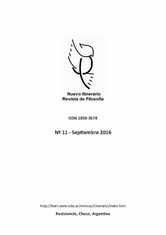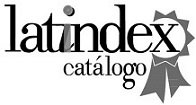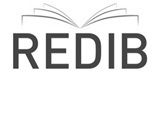At the glimmer of the analogies. The formation of the neo-baroque method in José Lezama Lima and Severo Sarduy
DOI:
https://doi.org/10.30972/nvt.0133127Keywords:
Lezama Lima, Severo Sarduy, hermeneutics, method, analogyAbstract
In 1957, the Cuban writer José Lezama Lima gave a series of lectures at the Center for Higher Studies of the National Institute of Cuba, which were later compiled and edited under the name of La expresión americana. We estimate that these essays outline a theory of reading closely linked to the Spanish-speaking world (generally relegated from the philosophical world) that is still in its infancy. The purpose of this article is to lay the foundations of a neo-baroque hermeneutic anchored in American territoriality. For Lezama, that privileged territory is Cuba; but so are the innumerable readings and the living images of a tradition that make up a concert that makes them contemporary. The oblique experience of the beloved object, almost always elided or absent, will lead the author of Paradiso to outline a reading device and a method of mythopoetic composition. The oblique experience of the beloved object, almost always elided or absent, will lead the author of Paradiso to outline a reading device and a method of mythopoetic composition with which to draw metaphorical links unthinkable among diverse cultural objects, whether canvases, oral legends , icons or texts. No matter how distant in time they are or the boundaries that separate those objects: it will be the power of certain primordial images and the ingenuity of the metaphorical subject, capable of finding analogies that steal from common sense, those that approximate the different. But that portentous imagination is not without a handle, as it might seem at first sight. The pages that we will comment reveal a very attentive reading of those authors of wide circulation between the 40s and 50s, and that serve to frame an original hermeneutical proposal and a theory of reading that includes writing as a moment of its own (hence the reference to the mythopoetic composition). Considering Lezama as a precursor, and inspired by post-structuralist premises in vogue in the 70s, Sarduy takes up the premises of that method which, however, transforms. The mark of the teacher subsists but the impetus of the analogies is renewed. In this sense, Baroque and neo-baroque will be the text that condense the premises of the Sardinian method, its own reading device. This method is called retombée, in which the analogy between distant elements, the basis of Lezama's comparatism, is taken up with new vigor. Disseminated throughout some of his main essays, the aesthetic-political connotations of the concept of retombée project the impetus of the counterconquest as an expression of the baroque in America. We will refer to that aesthetic-political projection in our conclusionsReferences
Borges, Jorge Luis. Obras Completas. Buenos Aires, Emecé, 1974.
Curtius, Ernst Robert. Literatura europea y Edad Media latina. México, FCE, 1955.
Eliot, Thomas Stearns. “Ulysses, Order and Myth”. The Dial, LXXV, Nov. 1923. Disponible en castellano en https://es.scribd.com/document/281577425/T-S-Eliot-Ulises-Orden-y-Mito
Lezama Lima, José. Ensayos barrocos. Imagen y figuras en América Latina. Buenos Aires, Colihue, 2014.
Lezama Lima, José. Oppiano Licario. Madrid, Cátedra, 1989.
Lezama Lima, José. Paradiso. Buenos Aires, ediciones de la Flor, 1968.
Rossi, María José. “La errancia como método: la noche de Jacques Rancière”. Nuevo Itinerario, Revista digital de Filosofía, Septiembre 2017.
Sarduy, Severo. El barroco y el neobarroco. Buenos Aires, Cuadernos del Plata, 2011.
Sarduy, Severo. Obra completa. Edición crítica de Gustavo Guerrero-François Wahl Buenos Aires, Tomos I y II. Buenos Aires, Secretaría de Cultura de la Presidencia de la Nación, 1999.
Snyder, Jon. La estética del Barroco. Madrid, La balsa de la medusa, 2014.
Warburg, Aby. La pervivencia de las imágenes. Buenos Aires, Miluno, 2014.
Downloads
Published
How to Cite
Issue
Section
License
Les autores ceden a Nuevo Itinerario los derechos de publicidad de sus trabajos, toda vez que hayan sido admitidos como parte de alguno de sus números. Ello no obstante, les autores retienen los derechos de propiedad intelectual y responsabilidad ética así como la posibilidad de dar difusión propia por los medios que consideren.












51.jpg)

